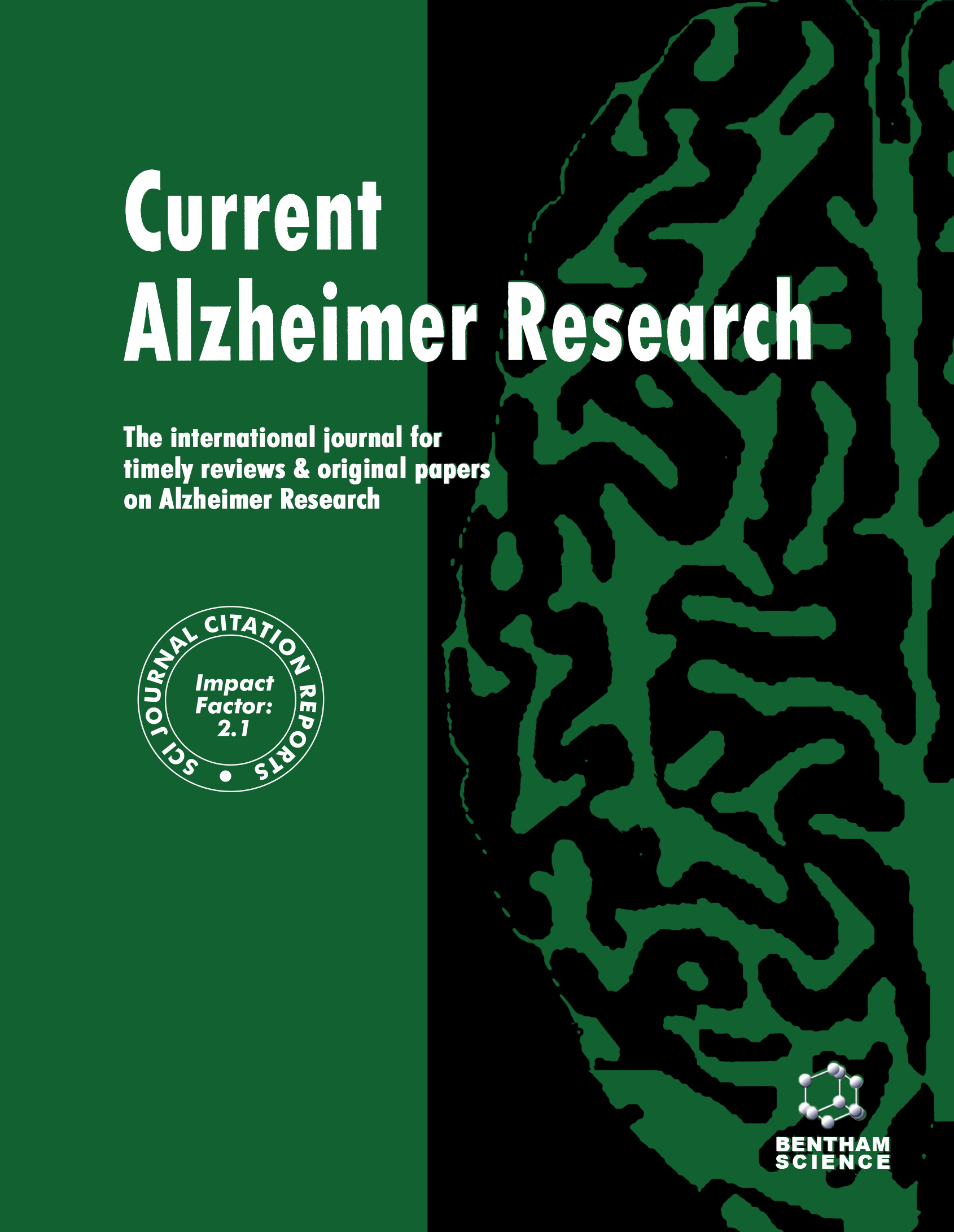- Home
- A-Z Publications
- Current Alzheimer Research
- Previous Issues
- Volume 17, Issue 14, 2020
Current Alzheimer Research - Volume 17, Issue 14, 2020
Volume 17, Issue 14, 2020
-
-
Alzheimer’s Disease and its Related Dementia Types: A Review on Their Management Via Nanotechnology Based Therapeutic Strategies
More LessAuthors: Panoraia I. Siafaka, Gökce Mutlu and Neslihan Ü. OkurBackground: Dementia and its related types such as Alzheimer’s disease, vascular dementia and mixed dementia belong to brain associated diseases, resulting in long-term progressive memory loss. These diseases are so severe that can affect a person's daily routine. Up to date, treatment of dementia is still an unmet challenge due to their complex pathophysiology and unavailable efficient pharmacological appro Read More
-
-
-
RAGE Isoforms, its Ligands and their Role in Pathophysiology of Alzheimer’s Disease
More LessAuthors: Rani C. Chellappa, Rani Palanisamy and Karthikeyan SwaminathanReceptor for Advanced Glycation End product (RAGE) plays a crucial role in a variety of physiological and pathological processes due to its ability to bind a broad repertory of ligands. There are also multiple forms of RAGE that exist; some work on promoting feed-forward pathways while others perform inhibitory actions. This review focuses on the RAGE isoforms expression, its intracellular pathways activation via RAGE- ligand in Read More
-
-
-
CREB: A Multifaceted Target for Alzheimer’s Disease
More LessAuthors: Vivek K. Sharma and Thakur G. SinghAlzheimer’s disease (AD) is a persistent neuropathological stipulation manifested in the form of neuronal/synapse demise, the formation of senile plaques, hyperphosphorylated tau tangles, neuroinflammation, and apoptotic cell death. The absence of a therapeutic breakthrough for AD has continued the quest to find a suitable intervention. Apart from various candidates, the cyclic AMPprotein kinase A-cAMP response eleme Read More
-
-
-
Enhanced Anti-Amyloid Effect of Combined Leptin and Pioglitazone in APP/PS1 Transgenic Mice
More LessBackground: Alzheimer’s disease (AD) has challenged single-target therapeutic strategies, raising the possibility that combined therapies may offer a more effective treatment strategy. Objective: There is substantial evidence for the efficacy of leptin (L) (neuroprotective hormone) and pioglitazone (P) (anti-inflammatory agent) as monotherapies in AD. We have previously shown that combination treatment of L+P in APP Read More
-
-
-
Nanoparticle-Encapsulated Bryostatin-1 Activates α-Secretase and PKC Isoforms In vitro and Facilitates Acquisition and Retention of Spatial Learning in an Alzheimer's Disease Mouse Model
More LessBackground: Alzheimer’s disease (AD) animal models have revealed neuroprotective actions of Bryostatin-1 mediated by activation of novel PKC isoforms, suppression of beta-amyloid and downregulation of inflammatory and angiogenic events, making Bryostatin-1 an attractive candidate for attenuating AD-associated neural, vascular, and cognitive disturbances. Objective: To further enhance Bryostatin-1 efficacy, nanoparticl Read More
-
-
-
Sevoflurane But Not Propofol Provided Dual Effects of Cell Survival in Human Neuroblastoma SH-SY5Y Cells
More LessAuthors: Xue Gao, Xiu Wang, Lei Zhang, Ge Liang, Rachel Mund and Huafeng WeiBackground: We have hypothesized that the most commonly used intravenous (propofol) and inhalational (sevoflurane) general anesthetics affect cell survival concentration and duration dependently with different potency associated with their differential potency to affect intracellular Ca+2 homeostasis. Methods: Human neuroblastoma SH-SY5Y cells stably transfected with either wild type or M146L mutant human presenilin Read More
-
-
-
Neuroprotector Effect of Daily 8-Minutes of High-Intensity Interval Training in Rat Aβ1-42 Alzheimer Disease Model
More LessBackground: Alzheimer’s disease (AD) is the most common and irreversible neurodegenerative disorder, and amyloid peptide plays a central role in its pathogenesis. Physical training contributes as a beneficial adaptation to AD. However, these effects may be underestimated because much of the literature used fixed training prescription variables (intensity and volume) throughout the protocol. Moreover, researchers poorly un Read More
-
Volumes & issues
-
Volume 21 (2024)
-
Volume 20 (2023)
-
Volume 19 (2022)
-
Volume 18 (2021)
-
Volume 17 (2020)
-
Volume 16 (2019)
-
Volume 15 (2018)
-
Volume 14 (2017)
-
Volume 13 (2016)
-
Volume 12 (2015)
-
Volume 11 (2014)
-
Volume 10 (2013)
-
Volume 9 (2012)
-
Volume 8 (2011)
-
Volume 7 (2010)
-
Volume 6 (2009)
-
Volume 5 (2008)
-
Volume 4 (2007)
-
Volume 3 (2006)
-
Volume 2 (2005)
-
Volume 1 (2004)
Most Read This Month
Article
content/journals/car
Journal
10
5
false
en

Most Cited Most Cited RSS feed
-
-
Cognitive Reserve in Aging
Authors: A. M. Tucker and Y. Stern
-
- More Less

